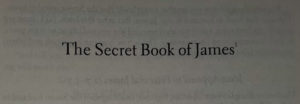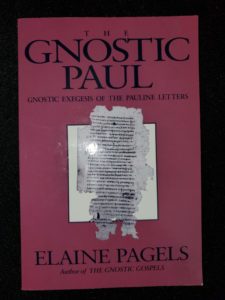In the Secret Book of James, Jesus encourages us to never settle with the straightforward reading or interpretation of scripture. That sounds pretty odd– it should be easy to read scripture, right? Offhand, that sounds like a pretty clear-cut question– texts should be accessible and easy to read. After all, don’t w e want to make sure that as many people as possible can hear and understand a text, and that they all get the correct message?
e want to make sure that as many people as possible can hear and understand a text, and that they all get the correct message?
An Apology for Difficult Texts
In reality, though, things aren’t that clear cut. After all– no matter how straightforward a text may seem, people still seem to often disagree about the message. Some thinkers have thought that this is a positive, not a negative, attribute– that texts should have an element of difficulty to them. For a text to really change a person, that person must engage with a text beyond a superficial level, and a person must struggle with and internalize the text.
To offer some historical examples–
-
- As the eminent translators of Soren Kierkegaard’s works, Howard and Edna Hong, noted in the translation notes to Kierkegaard’s Works of Love:
Kierkegaard carefully developed both thought and form to prevent easy and superficial reading, requiring the either/or of thoughtful reading or no illusion of having really read it at all… we do not have an author to consider but ourselves– merely prompted in our reflections by an author.
-
- In the Jewish mystical tradition, professor Daniel Matt’s translation of the Zohar contains the following text about the essence of the Torah. A man who lived in the mountains eating nothing but raw wheat kernels came down to the city and was exposed to bread for the first time…
“What is this?” he asked. The city people answered, “It’s bread. It’s for eating.”
He ate it and it was very good. He asked, “What is it made of?” They told him, “It’s made from wheat.”
Later, they brought the man cakes of flour mixed with oil. He tasted them and asked again, “What are these made of?” Again, the people told him, “They are made from wheat.”Afterwards, the city people gave the man pastry fit for a king made with oil and honey. The man asked, “What is this made of?” They answered, “It’s made from wheat.”
The man then said, “Enough. I am the master of all of these things, for I eat the essence of all of them — wheat!”This is what he thought, but actually he knew nothing of the world’s delights. It was lost on him. Thus it is for one who grasps an idea, but knows nothing of the delights that flow from it.
This story illustrates, among other things, that one who grasps merely the superficial understanding of a text is like one who eats raw kernels of wheat. Additional processing– cooking, adding oil, adding honey– all add to the richness and substance. One may be technically correct that a pastry and a grain of wheat are of the same essential substance, but to reduce one’s experience to the simplest and most basic ingredients is to lose richness, flavor, and substance. It is the same, the author of the Zohar might think, for religious texts.
A similar argument is made in the Secret Book of James, an early Christian text dating probably to the late 100s or early 200s AD. In fact, it borrows many of the same themes as the parable in the Zohar! Interested in learning more? Click below to find out!

 Did you know that not all early Christians observed the same sacraments as most Christians do, today? In a previous post, we
Did you know that not all early Christians observed the same sacraments as most Christians do, today? In a previous post, we 
